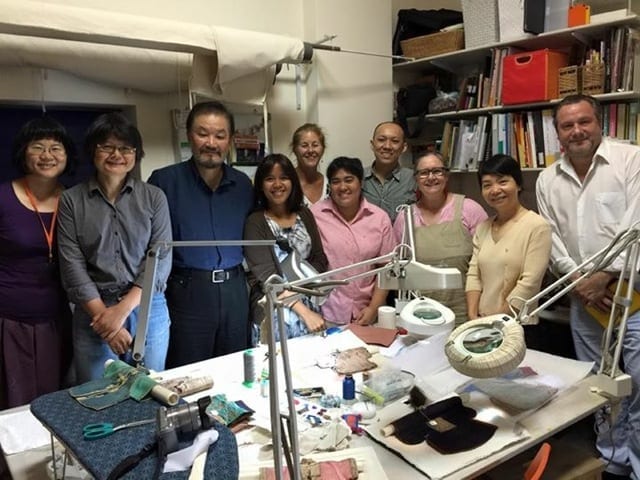
The Workshop Team
In the first partnership of its kind,
I led the The Queen Sirikit Museum of Textiles in Bangkok and the Taiyuan Asian Puppet Museum in Taipei for a puppet textile conservation training workshop.
In the lively one-week session, conservators Nuchada Piranprasankit and Yaowalak Bunnag, from the Queen Sirikit Museum of Textiles, and I trained staff at the Puppet Museum in techniques and treatments for these tiny marvels from the permanent collection of the Taiyuan Asian Puppet Theatre Museum 台原亞洲偶戲博物館。
My own knowledge also expanded as we learned all about the history of hand puppets and marionettes, their construction and fabrication, use and wear, and the marvelous artistic ‘culture’ of puppeteers. It was such a change from the usual treatment of human-size costumes and monumental banners and tapestries. Our hands and eyes were captivated by the tiny little costumes of hand puppets from the 1800 and 1900s with their tiny embroidery, applique, buttons and trim.
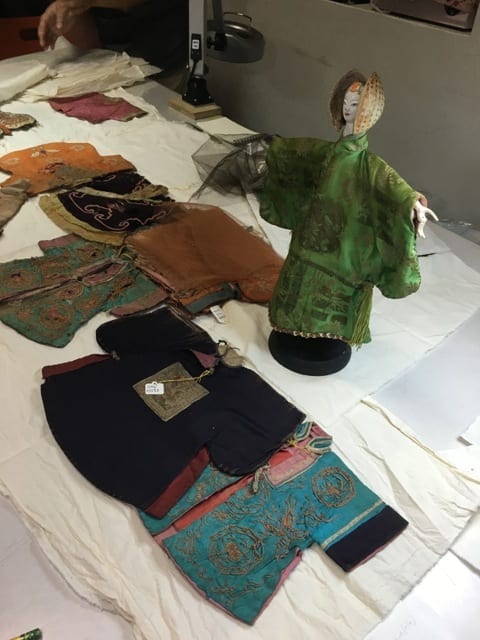 I was enchanted!
I was enchanted!
Surprisingly, many of these puppet costumes are exact replicas of full size pieces – gold embroidered dragon robes, scholars gowns, rank badges, golden courtesan dresses – but all in miniature! And although it is challenging to work on these tiny artifacts, we were able to treat over 15 costumes in a week – an impossibility in the world of large textiles.
- Treating Tiny Treasures
- Treating Tiny Treasures
- Treating Tiny Treasures
After transforming the collections workroom into a puppet hospital, we were abuzz with conservation discussions, wet cleanings, stitch repairs, and re-assembly of these exquisite soulful little darlings.
- The conservators at work.
- Our team sharing their expertise and techniques.
Like doctors, Nuchada, Yaowalak and I patiently worked using fine delicate support fabrics, sheer overlays, special threads that are as fine as human hair, and surgical needles, to re-construct and repair these small precious puppet costumes. We worked closely with Kim Seibert and Alex Ma, collection specialists and custodians of the over 10,000 puppets. In addition, staff from the Fujen Catholic University joined in the training.
Several 19th century costumes were wet cleaned. Worn down from heavy use, perspiration from the puppeteers’ hands, and being traditionally stored in large wood transport boxes, these costumes are very brittle, dry and acidic. First each fabric was carefully tested, and then the costumes were wet cleaned, using a traditional saponin, our local soap nuts [無患子]. Saponin is similar in chemical composition to sodium laurel sulfate, a surfactant commonly used by conservators. The careful cleaning removed the acidity, and made the fabrics cleaner and softer, so they will live longer.
- Kim Siebert with Yao and Puppet Museum volunteer.
- Yao treating a costume.
- Yao teaching laid-couching stitching.
- Alex color testing dyes prior to wet cleaning.
I am hopeful that this workshop will be the start of a long-term partnership between the two museums. As Nuchada and Yaowarat reflected as they headed home to Bangkok:
Most of the time, we work on Her Majesty’s couture clothing. Conserving puppet costumes is different! They are so small! Everything is in miniature, making the time of the treatment shorter, but also so very delicate and difficult. We learned so much about puppet costumes and this amazing tradition of performance and storytelling through ‘live action textiles’. We take home to Thailand a greater understanding of our region, and why textiles, little and big, are so important in all our lives.”
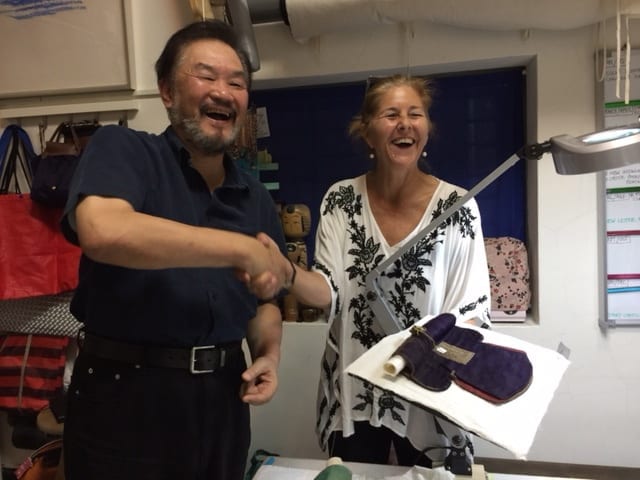
Great partnership with Dr. Lin
Here, the founder of the Puppet Museum, Dr Paul Lin, in a good exchange in the expertise of a surgeon and a textile conservator, acknowledging each other and how they use similar tools—like curved steel surgical needles, and techniques—techniques to ‘fix’ and care for people patients and as well the textiles! A Eureka moment!
一位外科醫師、一位修復師開心地笑了,他們懂、無論是人還是織,修復的方法相當類似。]
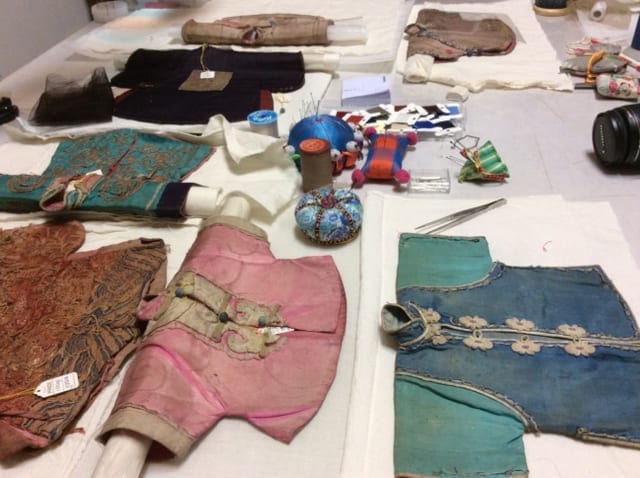
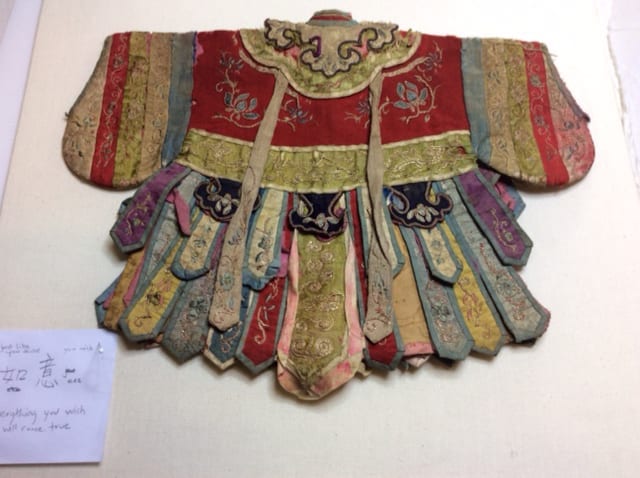
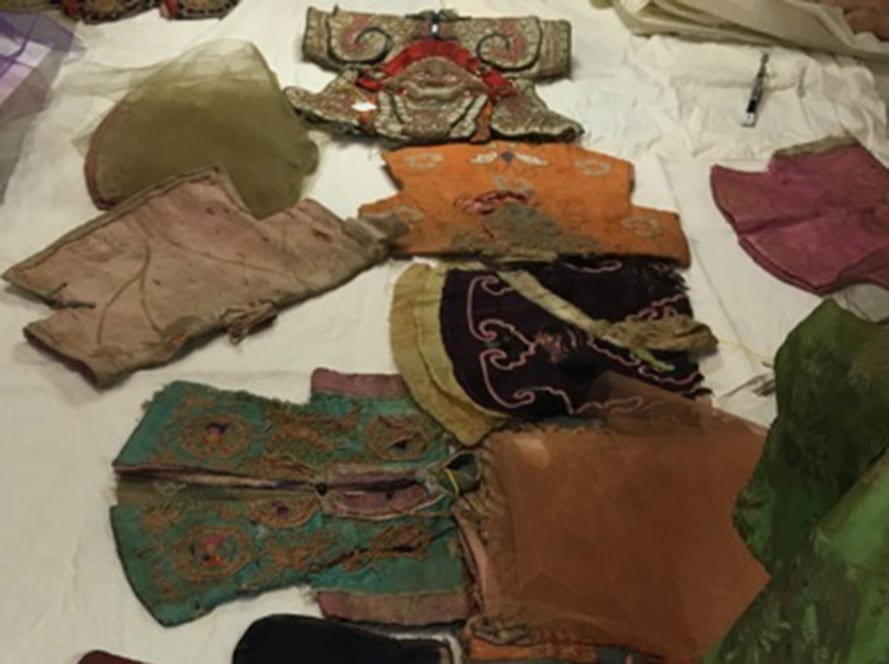
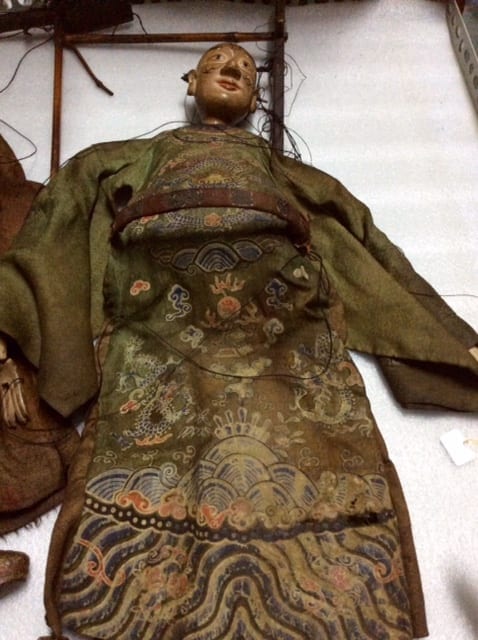
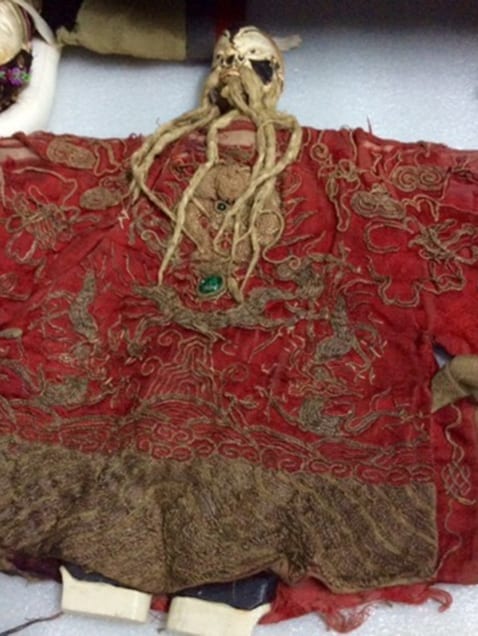
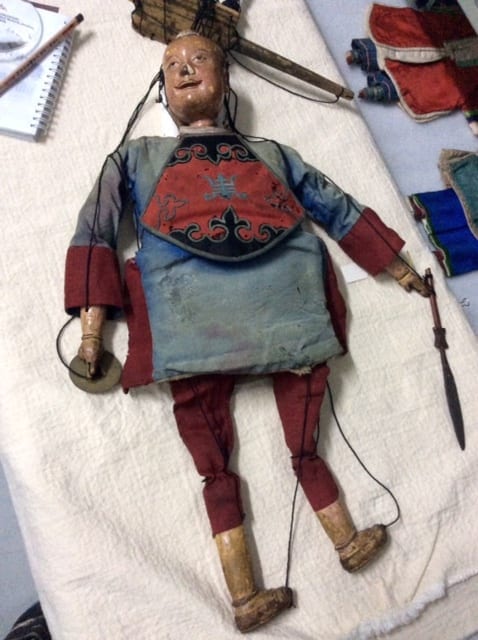
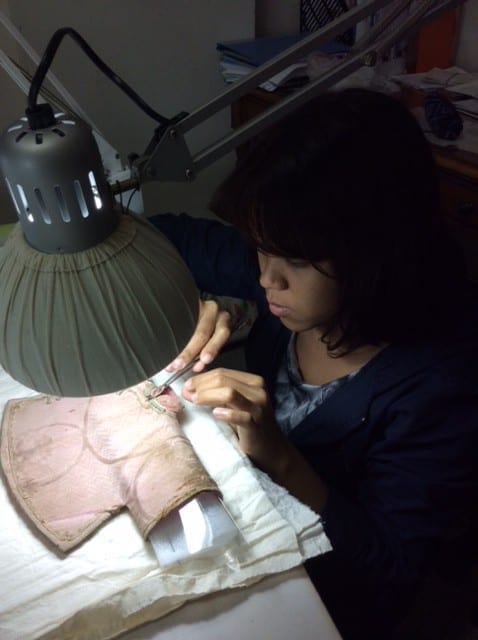
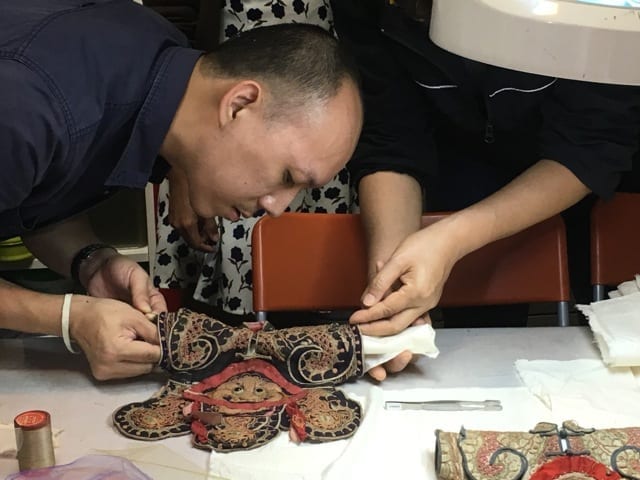
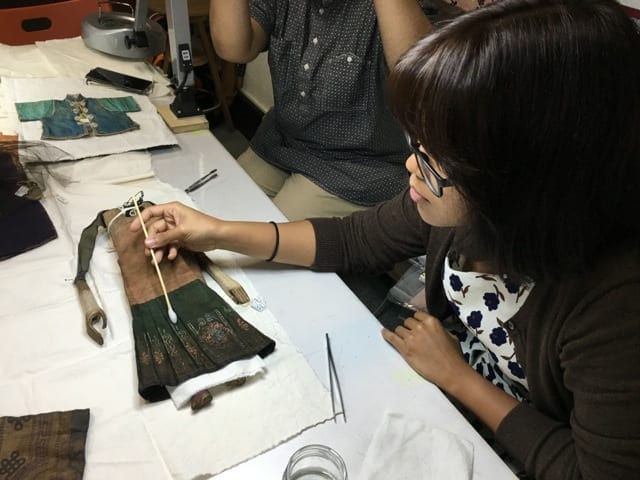
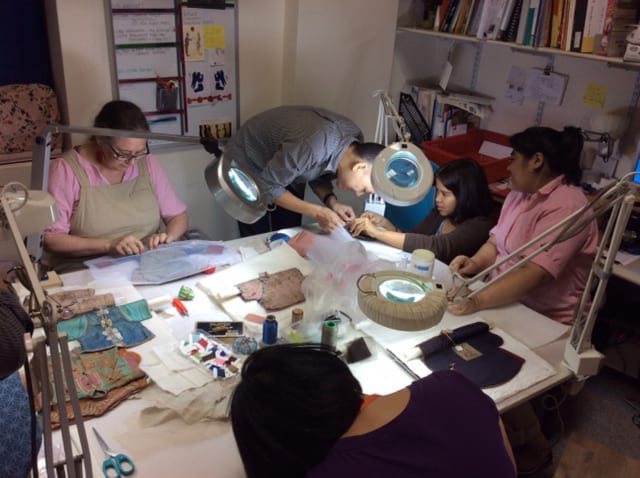
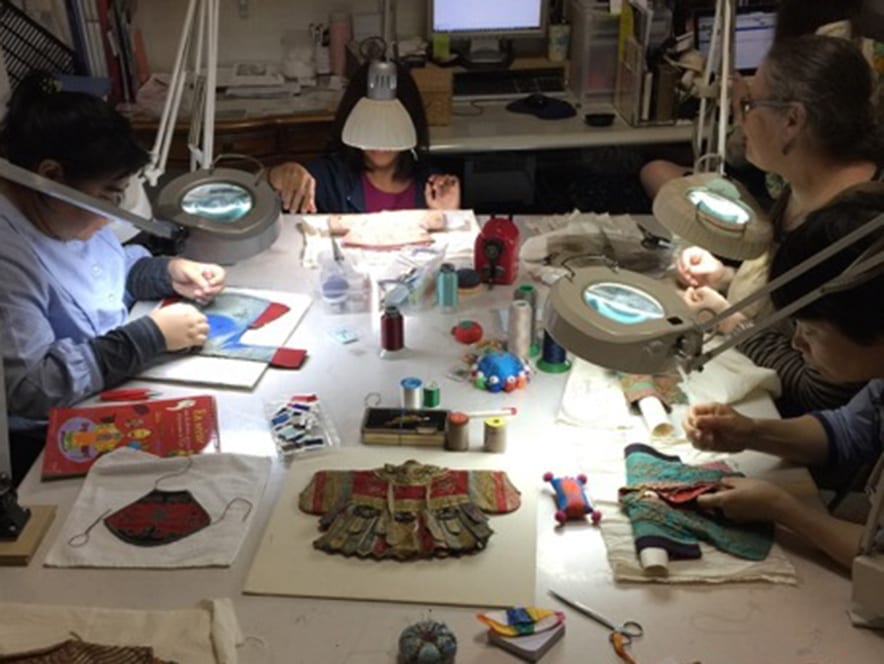
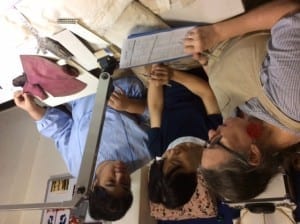
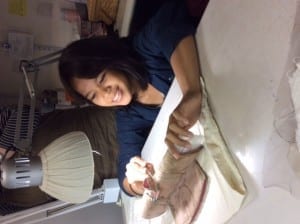
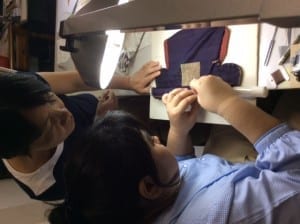
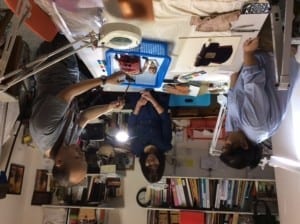

What a wonderfully enriching cultural experience
thank you Ian.
Julia, you are a marvel….wonderful to see what you’re up to!
thanks doreen, work is fun
O my, this looks wonderful. Such a pleasure to see the wonderful work you are doing!
What treasures and gifts to all concerned
How happy I am for you. And how I am grateful for all you’ve done, for what you bring to cultural preservation around the world.
A wonderfully inspiring project, Julia! We will be feeding off these days for decades into the future. The skills transferred were profound in this context:, a partnership that embraced classically trained puppeteers on the staff, the conservators, our textile academics and conservators at Fujen Catholic University, and the puppets of course. The teaching team of the Queen Shirikit Museum and yourself made for a detailed and nurturing learning combination where we could work on several different kinds of interventions, see magnificent workmanship unfolding in front of us, and participate on textiles from the collection, under the helpful and encouraging scrutiny of the teaching team. This kind of customized training does not come better than this for the specialist museum. Thank you! Thank you! Thank you!
You look absolutely radiant in the photo with Dr. Lin. You do love your work! Brava!
Good afternoon,
This is really a wonderful work. But i want to learn more. So could you share some stitch works that you have done in puppet costumes. It will be a great help.